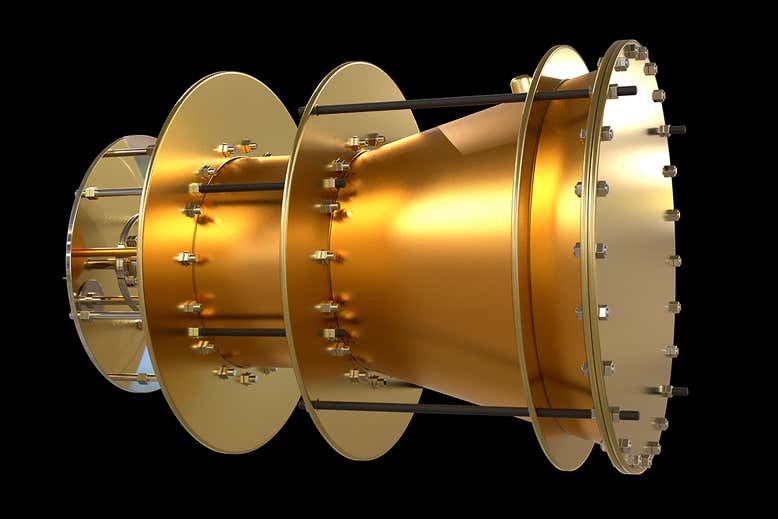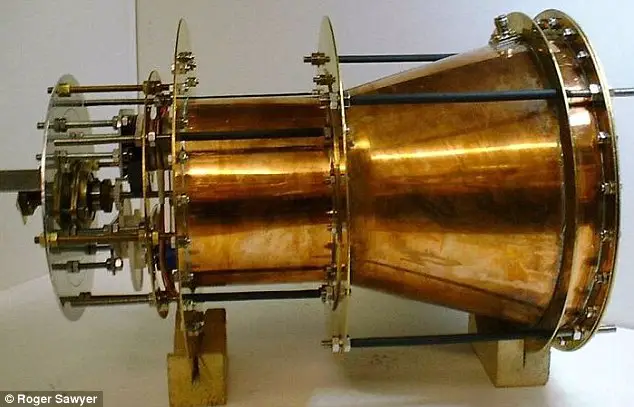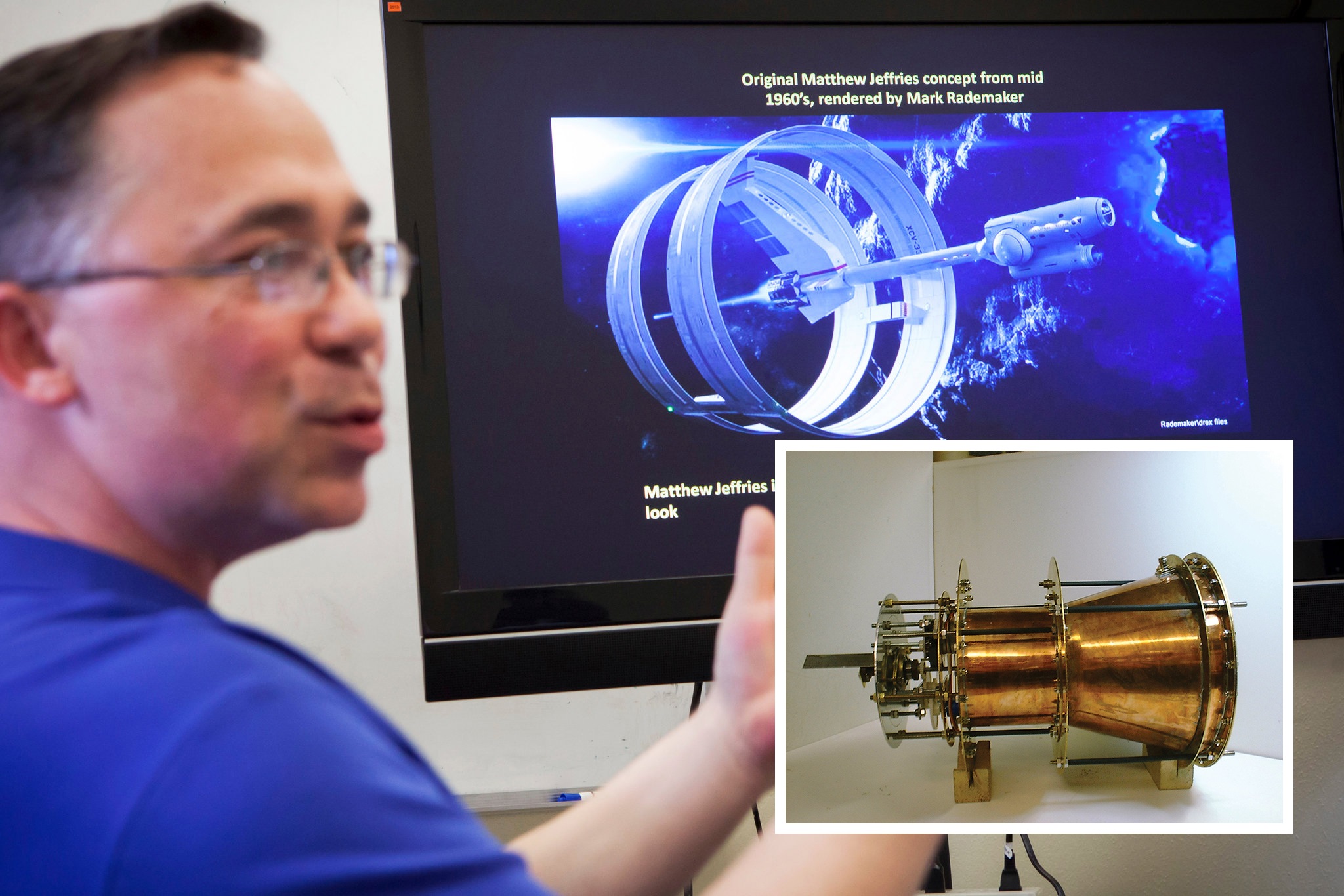NASA Develops Near-Light Speed Engine That Violates Physical Laws: A concept engine capable of accelerating to 99 percent the speed of light without the need for fuel. That may seem as though it came straight from a science fiction film, but it is not. This is precisely what one of NASA’s engineers is working on, and it has the potential to defy physics.
How are these engines going to be created? If it is to function without propellant, what will serve as its fuel? And, perhaps most crucially, will a person be able to travel in a vehicle powered by such an engine? We shall find out in a split second.
In space, we have a dilemma with our human need to go and study everything. This is a significant problem. In the end, it is just space. It is just too big for my taste.
There is no way for us to go to our closest neighboring star even if we traveled at the fastest speed allowed by the Universe. Another human desire is to find solutions to significant problems.
David Burns, a NASA engineer, has been doing precisely that in his own time. His engine proposal promises to be capable of accelerating to 99 percent of the speed of light, without the need of fuel.

The “Helical Engine” that he has sent to NASA’s Technical Reports Server is based on the idea that mass may change at relativistic speeds, which are speeds close to the speed of light in a vacuum. It has not been verified by an expert yet.
This story has elicited a level of interest equivalent to that of the EM Drive’s early days. The engine has been the subject of a few legends that claim it may be able to defy physics.
While the EM Drive was NASA’s initial attempt at building an engine capable of traveling faster than light, it is crucial to note that this was just the beginning. What is the purpose of EM Drive, and how does it work?
Radiofrequency resonant cavity thrusters, like Roger Shawyer’s EM Drive, were first proposed in 2001 by a British electrical engineer with 48 years of space and defense industry expertise.
Using microwaves to produce thrust is a breach of the law of conservation of momentum and other basic laws, according to the claims of this technology. The device has been referred to as the Impossible Drive by the media on a number of occasions.

Physicists have come up with theories about how the EmDrive may work that go beyond what we know. However, it may be interacting with space-quantum time’s vacuum energy, even if this vacuum energy does not allow anything to push against it.
Momentum may have been disrupted in our minds. According to the EmDrive testing, it might be a new kind of physics.
As there is not an official design, and neither of the people who claim to have built this device has committed to describing how it may work as a thruster or what parts compose it, determining whether a thing is an example of this device is impossible.
One such test was reported by NASA’s Advanced Propulsion Physics Laboratory in 2016, however, the results have not been reproduced. A mistake in the measurement of the thrust recorded was found to be due to the Earth’s magnetic field or temperature gradient interactions.
Scientists from the Technical University of Dresden issued three articles in March 2021 claiming that the push was explained by external influences and that it was a complete fluke.
While the Helical Engine is interesting, despite the promises to the contrary, it is unlikely to defy physics anytime soon. It has received considerable criticism, but Burns is certain that his idea is worth exploring.
“I am OK with putting it out there,” he adds. It was worth a chance, he argues, even if it does not work. What was his plan, exactly?
According to this, Burns shows an experiment in which the weight in the box is bouncing back and forth between the springs at each end of the line. For example, if you were to place a box in an empty area, the whole box would jiggle, but the weight would seem to stay static around the weight.
There will still be some movement in the box, but it will be more concentrated in one direction because of the weight’s mass increasing in just that direction. What are our thoughts?
According to the principle of momentum conservation, which stipulates that the momentum of a system stays constant in the absence of external effects, we believe that this is not totally possible.
Particle accelerators must account for Einstein’s theory of special relativity, which states that things acquire mass as they approach the speed of light.
Burns’s design might be simplified by replacing the ring with an accelerator, in which ions are accelerated to relativistic speeds during one stroke and decelerated during the other.
Burns, on the other hand, feels it would be more efficient to use the particle accelerator for both lateral and circular movement, which would need a helix-shaped accelerator.
Despite this, there is a problem in the theory of relativity. According to special relativity, mass increases when an object approaches the speed of light. Ions may theoretically travel faster at one end of a loop than at the other if they are replaced with weight and the box is replaced with a loop.
On the other hand, Burns’ drive is not a single closed loop. It is nicknamed a “helical engine” because it is helical, like a stretched spring. Acceleration to mild relativistic speeds is achieved by varying the velocity of ions in a loop, resulting in changes in their mass.
In order to generate thrust, the engine pushes ions back and forth in the direction of movement.” “The engine has no moving components other than ions flying in a vacuum line, locked between electric and magnetic fields,” he said.
For this experiment, New Scientist recommends that the helical chamber be somewhat large. To be precise, it is 200 meters in length and 12 meters in diameter, which is nearly 40 feet in circumference.
165 megawatts of power would be needed to generate one newton of thrust. As a power plant, this is the force required to accelerate one kilogram of mass per second squared per second. Helical is an example of a propulsion-free vehicle proposal that has been around for a while.
In the late 1970s, an American inventor, Robert Cook, invented an engine that he claimed could convert centrifugal force into linear speed. It was not until the early 2000s that British inventor Roger Shawyer came up with the idea of using the previously described electromagnetic drive (EM drive).

Because of a violation of a basic physical property, the conservation of momentum, neither idea has been shown to be true.
According to Dresden-based scientists who have tested the EM Drive, the helical engine is likely to have the same issue. According to one of them, “All inertial propulsion systems—to my knowledge—never operated in a friction-free environment.”
However, “unfortunately there is always action-reaction” in this machine’s usage of special relativity, he explains. Despite the fact that Burns has worked on his plan without NASA’s help, he concedes that it is wasteful.
He asserts, however, that the accelerator’s heat and radiation losses may be captured to some degree. It is also possible to save energy by using methods like the spin of pushed ions.
It “risks being right up there with the EM Drive and Cold Fusion,” the narrator adds. To avoid embarrassment, though, you must be prepared. It is quite tough to come up with a new invention that is both novel and effective.” Clearly, there is a lot of room for improvement when it comes to science.
Despite the fact that your mistrust is warranted, do not be fooled by this fact. We should not be astonished if a faster-than-light engine is developed in the future, given the rapid advancements in aircraft technology. Our science fiction imaginations will be on a fast route to becoming reality when that occurs.

